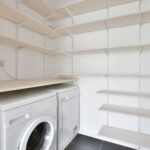Is home decor a good niche to invest in? Home decor is a multi-billion-dollar industry that continues to grow year over year. In this article, we will explore the potential of the home decor niche, including market analysis, profit potential, target audiences, trend analysis, challenges and competition, and marketing strategies.
The home decor market has seen a surge in demand in recent years, driven by factors such as the increasing number of homeowners and the growing interest in interior design. With the rise of social media platforms like Pinterest and Instagram, consumers are constantly seeking inspiration for their living spaces, creating a lucrative opportunity for those in the home decor industry.
As we delve into this topic further, we will analyze the financial side of the home decor niche and identify the target audiences who are purchasing these products. Additionally, we will explore the latest trends in home decor and discuss how to navigate through the challenges and competition within this market. Join us as we examine whether home decor is truly a good niche to consider for your business venture.
The Growing Demand for Home Decor Products
The home decor industry has seen a significant increase in demand over the past few years, making it a potentially lucrative niche for businesses. According to recent market analysis, the global home decor market size was valued at $616.6 billion in 2019 and is projected to reach $838.6 billion by 2027, with a CAGR of 3.75% during the forecast period.
One of the driving factors behind this growth is the increasing focus on personalized and aesthetically pleasing interiors among consumers. With the rise of social media platforms like Instagram and Pinterest, there has been a growing interest in home decor and interior design, leading to higher demand for home decor products. Additionally, the surge in home improvement and renovation projects due to the COVID-19 pandemic has also contributed to the spike in demand for home decor items.
Furthermore, technological advancements have made it easier for consumers to access a wide range of home decor products through e-commerce platforms, further fueling market growth. With more people embracing online shopping for their home decor needs, businesses have an opportunity to tap into this trend and capitalize on the growing demand for these products.
| Market Analysis Data | Figures |
|---|---|
| Global Home Decor Market Size (2019) | $616.6 billion |
| Projected Market Size (2027) | $838.6 billion |
| CAGR during forecast period | 75% |
The Profit Potential
The home decor niche is indeed a lucrative market with great profit potential. With the increasing demand for aesthetically pleasing and functional home products, it is no wonder that this niche continues to thrive. Here are some key points to consider when it comes to the financial side of the home decor niche:
- Wide Range of Products: Home decor encompasses a wide range of products, from furniture and lighting to textiles and decorative accessories. This variety allows for multiple revenue streams and the opportunity to cater to different budget levels.
- High Profit Margins: Many home decor products have high-profit margins, especially unique or custom-made items. With the right pricing strategy and sourcing tactics, entrepreneurs in this niche can enjoy healthy profit margins.
- Repeat Business Potential: Home decor is not just a one-time purchase; customers often return for additional items as they redecorate or update their living spaces. This repeat business potential can lead to a steady stream of income for businesses in this niche.
Understanding the financial side of the home decor niche involves careful consideration of product selection, pricing strategies, and sourcing methods. It’s essential to analyze the cost of goods sold, overhead expenses, and potential profit margins when entering this market.
Moreover, leveraging e-commerce platforms, social media marketing, and partnerships with interior designers or home influencers can help maximize profitability in the home decor niche. As with any business venture, thorough research and strategic planning are crucial for long-term success in this industry.
Identifying Target Audiences
When it comes to home decor, understanding the target audience is crucial for success in this niche. Whether it’s homeowners, renters, interior designers, or businesses, knowing who buys home decor products can help sellers tailor their products and marketing strategies to effectively reach potential customers.
Homeowners
One of the primary target audiences for home decor products is homeowners. This group includes individuals or families who own their own homes and are looking to enhance their living spaces. Homeowners often seek items such as wall art, furniture, rugs, and other decorative pieces to personalize their homes and create a comfortable and inviting environment.
Renters
While homeowners make up a significant portion of the target audience for home decor products, renters should not be overlooked. Renters may have limitations on what they can do to the physical structure of their living space, but they still have a desire to decorate and make their space feel like home. As a result, they are often interested in temporary or versatile decor items that can be easily moved when they relocate.
Interior Designers
Another important segment of the target audience for home decor products is interior designers. These professionals work with clients to create aesthetically pleasing and functional spaces. They often have specific preferences for the types of products they use in their designs and are constantly seeking new and unique items to incorporate into their projects.
Understanding these key target audiences is essential for anyone considering entering the home decor niche. By tailoring products and marketing efforts to appeal to these groups, sellers can better position themselves for success in this profitable market.
Trend Analysis
Embracing Sustainable and Eco-Friendly Decor
As the awareness of environmental issues continues to grow, there is a rising demand for sustainable and eco-friendly home decor products. Consumers are increasingly seeking items made from natural, renewable materials, as well as those that are ethically sourced and produced. This trend presents an opportunity for businesses within the home decor niche to cater to this environmentally conscious audience by offering a range of eco-friendly options, such as bamboo furniture, reclaimed wood accents, and organic textiles.
Minimalist and Scandinavian Design Influence
In recent years, minimalist and Scandinavian design principles have gained popularity in the home decor industry. Characterized by clean lines, simple forms, and a focus on functionality, these styles appeal to individuals looking to create uncluttered and calming living spaces.
As such, there is a growing demand for furniture and decor items that embody these aesthetic qualities. Businesses operating within the home decor niche can capitalize on this trend by providing a selection of sleek and understated pieces that align with the principles of minimalism and Scandinavian design.
Integration of Technology in Home Decor
The integration of technology into home decor products is becoming increasingly prevalent as smart home devices continue to gain traction in the market. From voice-activated lighting systems to app-controlled thermostats, technology-enhanced decor items offer convenience and innovation to consumers.
For businesses in this niche, incorporating smart features into their product offerings can appeal to tech-savvy customers who seek both functionality and modernity in their living spaces. Additionally, staying abreast of advancements in smart home technology can provide valuable opportunities for differentiation and competitive advantage within the home decor market.
Challenges and Competition
The home decor market is a lucrative industry, but it also comes with its fair share of challenges and competition. Understanding and navigating these obstacles is crucial for success in this niche. Here are some of the main challenges and competitors you may face in the home decor market:
1. Saturation: The home decor market is highly competitive, with countless businesses offering similar products. This saturation can make it difficult for new businesses to stand out and gain a foothold in the industry.
2. Changing Trends: The home decor industry is always evolving, with trends coming and going rapidly. Keeping up with these changes can be a challenge, especially for small businesses with limited resources.
3. Seasonal Demand: The demand for home decor products often fluctuates with the seasons. For example, there may be higher demand during the holiday season or when people are moving into new homes. Managing inventory and marketing efforts around these fluctuations can be challenging.
Despite these challenges, there are numerous opportunities for success in the home decor niche. By understanding and addressing these challenges head-on, businesses can position themselves for long-term growth and profitability.
Overall, the key to navigating the home decor market is to stay informed about changing trends, differentiate your brand from competitors, and develop a strong marketing strategy that resonates with your target audience. While competition may be fierce, there are still ample opportunities to carve out a profitable niche in this vibrant industry.
Marketing Strategies
When it comes to promoting home decor products, it is essential to have a well-defined marketing strategy in place. With the rise of e-commerce and social media, there are numerous avenues to explore when it comes to reaching potential customers.
One effective marketing strategy for home decor products is to utilize social media platforms such as Instagram, Pinterest, and Facebook. These visually-oriented platforms are perfect for showcasing the aesthetic appeal of home decor items. By creating engaging content, utilizing targeted ads, and collaborating with influencers, businesses can effectively promote their products to a wide audience.
Another important aspect of marketing home decor products is creating a compelling brand story. Consumers often connect with brands that have a unique and relatable story. This could include the inspiration behind the product designs, the company’s commitment to sustainability, or the craftsmanship behind each item. Incorporating this narrative into marketing materials can help establish an emotional connection with potential customers.
Additionally, hosting events such as pop-up shops or design workshops can be an effective way to promote home decor products. These events not only provide an opportunity for customers to experience the products in person but also create a sense of community around the brand. By offering exclusive discounts or limited edition items at these events, businesses can create a sense of urgency and excitement among attendees.
Overall, marketing strategies for home decor products should focus on visual storytelling, leveraging social media effectively, and creating meaningful connections with potential customers.
| Marketing Strategy | Description |
|---|---|
| Social Media Marketing | Utilize platforms like Instagram and Pinterest to showcase home decor items |
| Brand Storytelling | Create a compelling narrative around the brand and its products to connect with consumers |
| In-person Events | Host pop-up shops or design workshops to engage with potential customers in person |
Conclusion
In conclusion, after exploring the potential of the home decor niche, it is evident that there is a growing demand for home decor products. The market analysis reveals that more and more people are investing in decorating their homes, creating a lucrative opportunity for businesses in this niche. With the profit potential and the increasing trend of home decor, it is safe to say that home decor is indeed a good niche to consider.
Identifying target audiences who buy home decor products is crucial for businesses looking to enter this market. From millennials to baby boomers, there is a wide range of potential customers interested in home decor. Understanding the demographics and preferences of these consumers will allow businesses to effectively cater to their needs and preferences.
While there may be challenges and competition in the home decor market, with the right marketing strategies and trend analysis, businesses can successfully promote their products and stay ahead of the competition. By keeping up with the latest trends in home decor and offering unique and high-quality products, businesses can carve out their place in this niche market.
Overall, considering all aspects discussed in this article, it can be stated that yes, home decor is indeed a good niche for businesses to explore.
Frequently Asked Questions
How Profitable Is Home Decor Business?
The profitability of a home decor business can vary widely depending on several factors such as the target market, location, and the unique offerings of the business. Generally, there is a demand for home decor items, but success depends on effective marketing and product selection.
Is Home Decor a Niche?
Home decor can definitely be considered a niche within the larger retail industry. It focuses on items specifically designed to enhance and decorate living spaces, and often appeals to those with a passion for interior design or home improvement.
Who Buys the Most Home Decor?
The demographic that buys the most home decor tends to be women between the ages of 25-54. These individuals are often homeowners or renters looking to personalize their living spaces with decorative items that reflect their personal style and preferences.
Additionally, young adults who are setting up their first homes also tend to purchase a significant amount of home decor items.

I’m thrilled to be your companion on this exciting journey through the world of home decor and design. With a passion for turning houses into homes and a keen eye for the finer details, I’m here to help you transform your living spaces into beautiful, functional, and meaningful havens.





